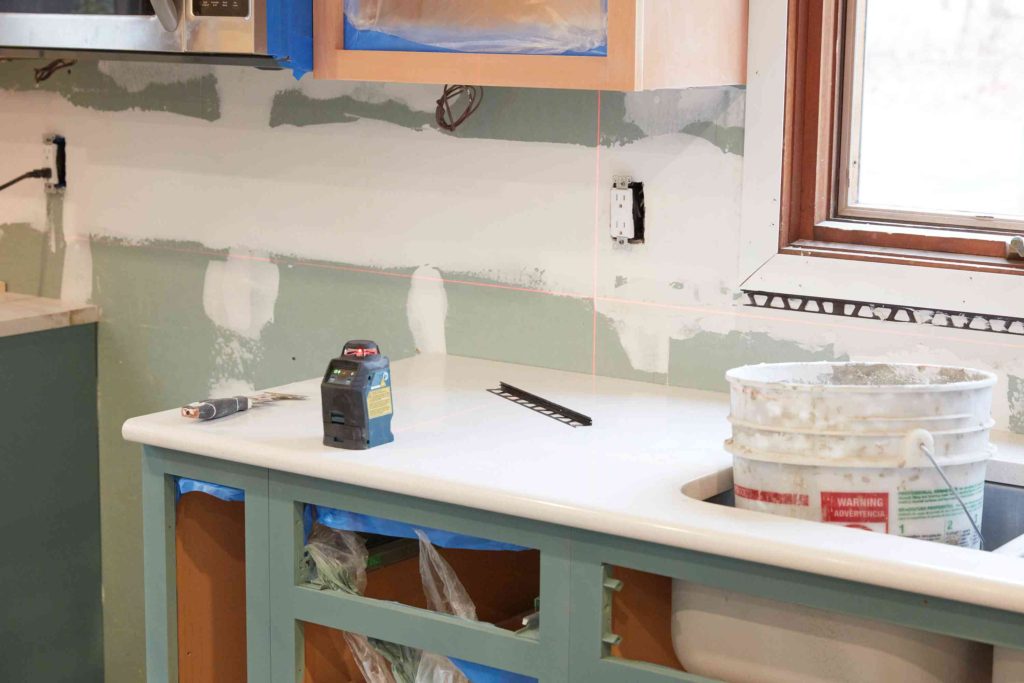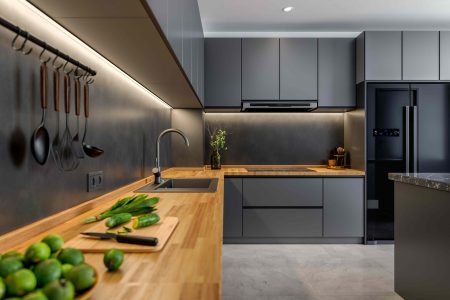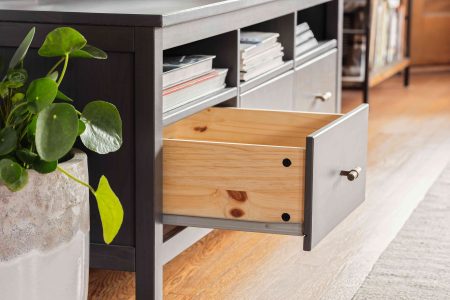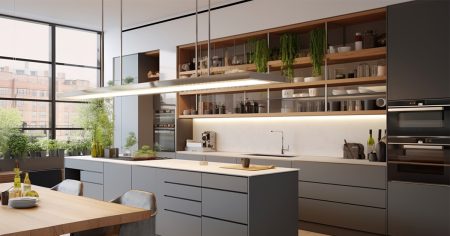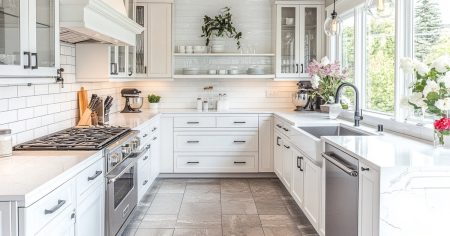If you’re looking for precise estimates on what it will cost to remodel a kitchen, you typically encounter a brick wall. The primary reason is that remodeling pros cannot issue kitchen remodeling estimates from afar.
It’s hard enough giving cost estimates when you’re on-site and familiar with the client and the kitchen. But when a contractor issues an estimate, he or she is dealing with a swirl of often-competing factors. Once you think you’ve got a rough estimate locked down, another factor gets introduced (season, locale, drywall prices are up, you name it) and everything changes once again.
Cost vs. Value Reports
Homeowners interested in a kitchen remodel estimates are usually shuttled to something called the “Cost vs. Value Report,” issued every year by Remodeling Magazine. Costs across the nation and by region are blended to produce generalized numbers offering average costs.
While the Cost vs. Value Report is valuable, it excludes one thing: your thought process. It’s all too easy for homeowners to find an estimate on the matrix, and say, “Well, that must be it; done!”
But you need to take a more measured approach to the issue of kitchen remodeling costs instead of insisting on a single concrete number. Juggle various cost estimates in your head, intersect those data points with what you get for that price—and that squishy figure that comes out is a real-life estimate. Sounds complicated? You bet. Kitchen remodeling is complicated.
Mid-Level Remodel
William Fadul, co-owner of MOSAIC Group, tells us that his estimate of $50,000 to $75,000 applies to a 12 x16-foot kitchen and involves pretty much everything that homeowners want in a mid-range remodel: new semi-custom cabinets; all-new appliances (budgeted around $6,000); granite or solid-surface counters; laying new floors or tying-in existing floors; minor structural work; and much more.
Surprised by that figure? Well, don’t be. That’s pretty much what can expect to pay for a quality kitchen remodel managed by a competent general contractor.
If you want to go lower-end, Fadul says that you’re dealing with a less invasive process that does little more than “refacing and sprucing up all of the finishes.”
Three Remodeling Levels
When embarking on a kitchen remodel “first prepare a realistic budget and then search for someone who will work with you to achieve your dream kitchen,” says Seattle homebuilder Russ Lavallee of Lavallee Construction.
Lavallee knows what he’s talking about, too. He’s been in the business of both new construction and renovating older homes for more than 21 years.
Lavallee echoes earlier sentiments about shifting variables having a huge impact on the kitchen remodel estimates. But he is perfectly willing to work within a customer’s budget. Remember, many contractors expect the opposite. You’re supposed to adjust to their figures.
Says Lavallee, “if a customer only has $5,000 to remodel a kitchen, I can tell them what their options are and what I can give them for that budget.”
Low-Range Estimates
“Low-range renovations,” says Lavallee, “run from approximately $100 to $125 per square foot and will brighten up a kitchen without making any major changes in the physical space. This can include door replacements, installing new laminate or basic tile countertops, and other items.”
Mid-Range Estimates
Lavallee goes on to say, “At $200 to $250 per square foot, a mid-range kitchen remodel is a step up in both price and quality. The customer has more choices and will see a difference in the higher-end products that are available within this price range including better tile, Corian-like countertops, or vinyl flooring.”
High-End Estimates
Lavallee concludes by saying that “When the price is not a factor and customers have a higher budget of $300 or more per square foot, this is generally a full-scale renovation or ‘gut to the studs.’ With a bigger budget comes an endless array of choices and prices to match that will create an entirely reconfigured space outfitted with the latest high-end products including new plumbing, countertops, flooring, hardware, woodwork, and lighting.”
Mid-Level and Low-Level Estimates
Leigh Gardner of Coastal Reconstruction Group says that a mid-range kitchen remodels, not including removal of walls or relocation of electrical or plumbing, might include:
- Maple 42-inch cabinets with crown molding
- Drawer stack
- Lazy Susan
- Refrigerator cabinet
- Solid-surface counters
- Ceramic tile floor
- Integrated or under-mount sink
- High arc faucet
- Dishwasher
- Garbage disposal
- Side-by-side fridge with ice and water
- Smooth top electric range
- Microwave/hood over range
- Can lights
- Painting the walls
- Removing and disposing of demolition materials
Your ticket for this ranges from $19,000 to $45,000. Many factors can slide the figure up or down.
A low-range kitchen remodel may run you anywhere from $12,000 to $21,000. At this level, you are essentially getting less expensive materials: vinyl floor instead of ceramic tile, top-mount refrigerator instead of side-by-side, fluorescent lights instead of can lights, etc.
Small Kitchen Remodels
Michael Anschel of the design-build firm Otogawa-Anschel Design-Build in Minneapolis says, “The cost of a kitchen remodel obviously depends on the level to which the space is remodeled,” says Anschel. “We have some projects that had tiny budgets (under $30,000) and we got pretty creative with materials, and reusing cabinetry and salvaged materials.”
Anschel says that as a rule of thumb, $40,000 is what you might find for a basic small kitchen remodel. He goes on to say that you can expect around “$60,000 to $80,000 for the majority of kitchen remodels that are making layout changes, solid surfaces, new lighting configuration, nice cabinets/appliances.”
Anschel notes a few kitchens that went above $90,000 but notes that the high cost was either driven by unique carpentry or because of a serious reconfiguration of the entire interior space.
Anschel goes on to say that “If you throw an addition into the mix, then the numbers can be radically higher depending on what is taking place. If the entire kitchen is to be placed in the new addition, then costs tend to run between $80,000 to $150,000.”
Problems With the Cost vs. Value Report
Anschel also tells us that the “problem with the Cost vs. Value Report is that it pulls data from permits and every state and sometimes a city has a different requirement for what the stated value on the permit should include.”
He goes on to say that the magazine gives artificially low figures for the costs of kitchen remodels because the figures are drawn from permit applications and many “contractors will lie about the cost in order to keep permit fees low.” As a result, the cost averages based on permit amounts may be considerably lower than actual costs.
In the kitchen and house building/remodeling debate, one thing that rarely gets mentioned is the long-term social implications and quality of life issues. Anschel suggests that discussion of project costs should also include a frank conversation of employee wages, work safety, and business practices—not to mention that remodeling represents an investment in the quality of life by the homeowner.
“After all, we are talking about the most expensive thing most people own, and the place where they will spend more than half of their life!”
Read the full article here



